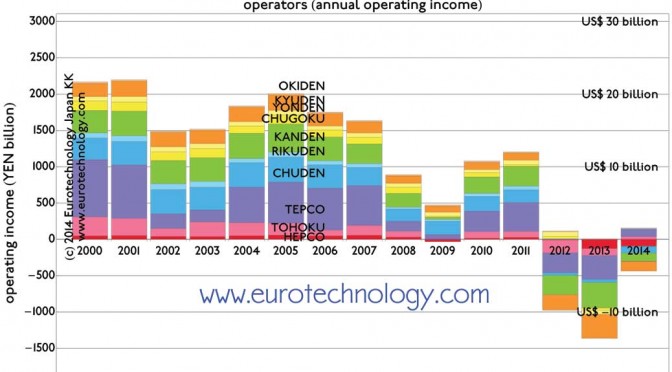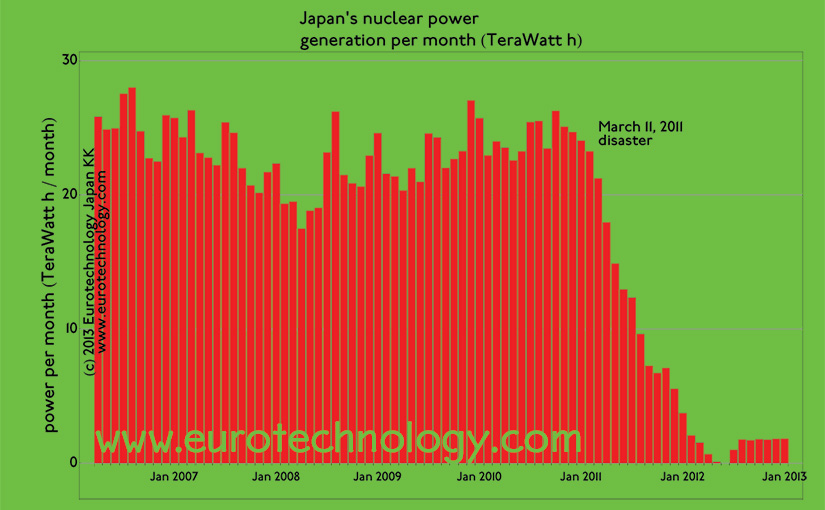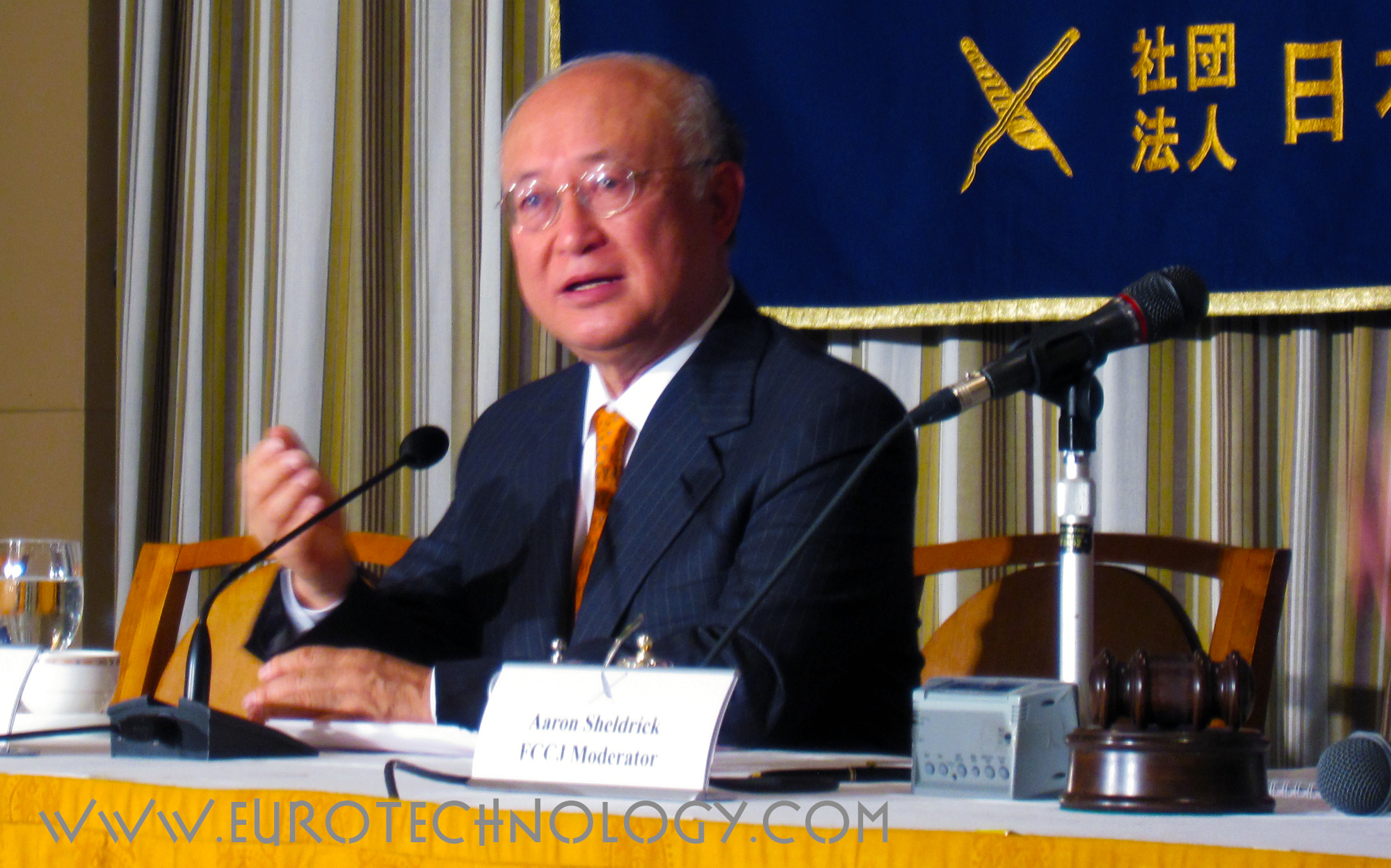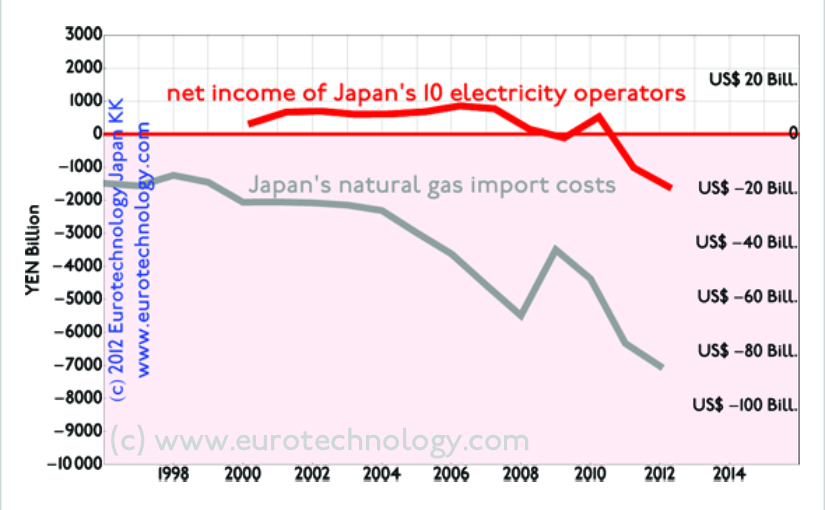Japan electricity regional operators’ income peaked about 10 years ago
Japanese electricity companies’ business models face massive disruption by technology innovation and the Fukushima nuclear accident
With the annual general shareholder meetings completed and financial results published, we have analyzed the financial results of Japan’s 10 regional electric power companies (plus several other Japanese electricity companies, including J-Power) in detail.
We find that each of Japan’s electrical power companies has its own particular circumstances, and some are coping better than others, while of course Tokyo Electric Power Company is a special case due to the incalculable costs of the Fukushima nuclear accident, and due to possible changes in case of a change of Japanese Government policy regarding TEPCO.
Our financial analysis shows, that revenues of Japan’s electricity sector have increased substantially, due to increased electricity costs. On the other hand, revenues of Japan’s electricity companies overall have been declining steadily since a peak around 2005, i.e. ten years ago.
Switching off nuclear power generation contributes to financial problems, but is clearly not the root cause
From our analysis it is obvious that the financial profitability issues of Japan’s electricity sector have started about 10 years ago, long before nuclear reactors were switched off due to the Fukushima accident – while of course the switch-off of nuclear power does contribute to a worsening of the financial situation in the last 3 years.
Clearly, the electricity deregulation which is now on track with regulatory and legal changes, was long overdue, and in my opinion is more due to the declining profitability of Japan’s electricity sector, than immediately triggered by the Fukushima accident. The financial data clearly show that a change of business model for Japan’s electricity sector is needed.

Chugoku Electric Power Company as an example
Our analysis shows that each of Japan’s 10 regional electricity companies have different financial circumstances.
We discuss Chugoku Electric Power Company which serves the area around Nagoya in the middle of Japan as an example. The Figure below shows that Chugoku Electric Power Company’s income peaked around 2004-2005, about ten years ago, and since then has been continuously falling, with net income dropping into the red for the first time for Financial Year 2008 (ending March 31, 2009), about two years before the Fukushima nuclear disaster. An important point to consider is that only about 10% of the electricity generation capacity of Chugoku Electric Power Company is nuclear power, which is one of the lowest ratios of nuclear power in Japan. It follows logically, that switching off this 10% of nuclear generation capacity has a much lower impact than for other regional power companies, where the nuclear contribution was about 30%.

We conclude that the peak around 2004-2005 in profitability followed by a long decline in profitability indicates a deep rooted need for change of business models which was exacerbated but not directly caused by the Fukushima nuclear accident. Japan’s Government is now reacting to this fact by deregulating the electricity sector.
Japan electricity: Why do current business models need to change?
- Japan’s regional electricity companies enjoyed monopoly power within their regions, where the electricity prices were regulated by Government, and in exchange electricity companies could enjoy a financial model where they could charge costs + profits to customers. There was no competition and little incentive to reduce costs
- Japan will now follow the global trend from top-down electricity grids with large central generation facilities and a top-down distribution grid to more de-centralized, localized smart-grids, driven by technological progress, and the emergence of renewable energy.
Renewable energy Japan – research report
Japan’s energy sector – research report
Copyright 2014-2019 Eurotechnology Japan KK All Rights Reserved






